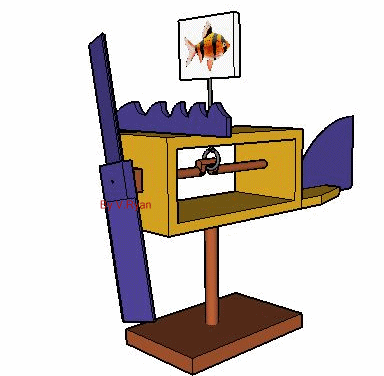|
Cranks have many uses and they can be found in some toys as part of a mechanism or in serious machinery such as car engines. Some cranks are attached to mechanisms that are difficult to turn or rotate.
|
|
The diagram opposite shows the handle (crank) of an old fashioned record player, being turned. Turning the crank stores energy in a strong ‘spring mechanism’ inside the player. When the handle is released the stored energy in the spring turns the record, allowing music to play. Modern wind-up radios use the same type of mechanism.
Without the crank (handle) it would be very difficult or even impossible to wind the spring inside the player.
|

|
|
The crank acts like a lever, increasing mechanical advantage (the distance between the handle and the central shaft is increased - this makes it easier to turn).
|
Ed the Handyman winds the crank on his old fashioned record player. This stores energy inside the player.
|
| |
|
|
|
|
|
Below is a good example of a crank shaft. When a shaft has two or more cranks it can be called a crank shaft. A typical example of a crank shaft can be found on small mechanical vehicles made for young children. As the child peddles the crank shaft rotates the wheels and the vehicle moves forward.
|
|
|
|
|

|
|
Above we see Ed the Handyman of Energy Efficient Cars. Ed thinks if he manufactures a full sized version of a child's crank shaft driven toy vehicle he can sell it to adults, helping them commute to work every morning. Would you buy one?
DISCLAIMER - Energy Efficient Cars is a fictitious company. Ed the Handyman is a fictitious character. Both have been created to support the article above relating to cranks
|
| |
|
|
|
| |
|
| EXAMPLE OF A MECHANICAL TOY BASED ON A CRANK |
|

|